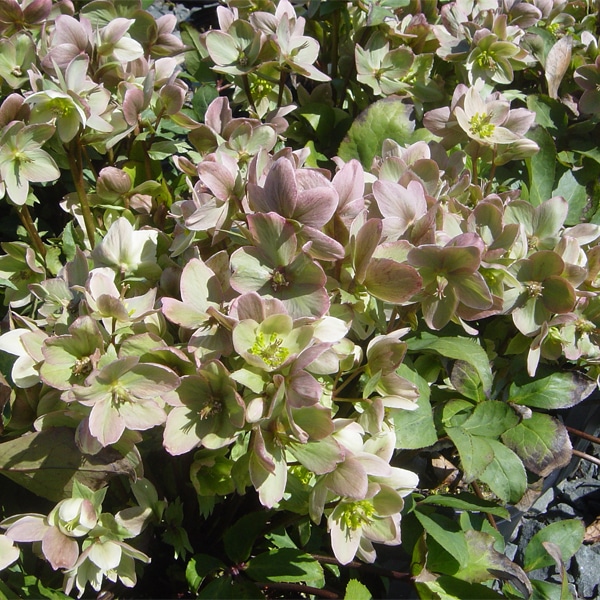
Beckoning the transition from late winter into early spring are a number of exquisite, rarely-seen flowering plants, typically limited to the gardens of seasoned gardeners and avid horticulturists. Garden centers are reluctant to carry these “collectors’ specialties”, not only because so few customers shop so early in the year, but also because appreciating their features involves special attention to detail by homeowners. Some garden centers may be able to source them for you if specifically requested.
- White forsythia (Abeliophyllum distichum): a 5 ft. mounding deciduous shrub with a profusion of sweetly-fragrant, tiny white flower spikes on arching branches, blooming concurrently with or earlier than its more familiar yellow-flowering hybrid forsythia “sisters”;
- February daphne (Daphne mezereum) features pink-purple (or white) fragrant flowers clustered along bare, stiffly upright stems in April. Thriving in part shade, reaching 3-5 ft. high and wide after 10+ years, shiny red (or yellow, on white-flowering type) berries appear in June;
- Northern spicebush (Lindera benzoin) is a native woodland shrub whose multiple smooth stems are clothed with tiny, greenish-yellow flowers the first warm days of spring. Bright green leaves all summer turn yellow in fall, revealing red berries as they drop. Fragrant flowers leaves and stems. It reaches 6-10+’ tall and wide, is very shade-tolerant and appreciates moist soils;
- Viburnum bodnantense, one of the earliest-flowering viburnum species with clusters of fragrant pink flowers continuing for weeks on naked branches, maturing up to 10 ft. tall. Clean green leaves turn burgundy-red before dropping in fall;
- Lenten rose (Helleborus), surprisingly rather obscure in gardens until recent years, is one of the surest signs of spring, with flowers persisting for many weeks. Clump-forming with deer-resistant evergreen foliage, many species and cultivars in a wide range of colors are now commonly available in local garden centers;
- Anise or willow-leaf magnolia’s (Magnolia salicifolia) delicate, lemon-scented white flowers open for a brief period just as warmer weather begins. Leaves and bark emit a licorice-like fragrance when crushed or scratched. Grows to 20’ or more, sun or high shade.
These unusual spring-welcoming plants may not be suited for every garden, and many are hard to find. But if you’re yearning for special encouragement as winter slowly releases its grip on the garden, these may be worth a try; the more commonly-viewed blooms of “real spring” still need a few more weeks of warmer weather to appear!
By R. Wayne Mezitt – waynem@westonnurseries.com
Wayne Mezitt is a 3rd generation nurseryman, a Massachusetts Certified Horticulturist, now chairman of Weston Nurseries of Hopkinton, Chelmsford & Hingham MA, and owner of “Hort-Sense”, a horticultural advisory business. He currently serves in various capacities on several horticulturally-related organizations, including the Massachusetts Horticultural Society at The Gardens at Elm Bank in Wellesley MA, and chairman for the Massachusetts Invasive Plant Advisory Group (MIPAG).









